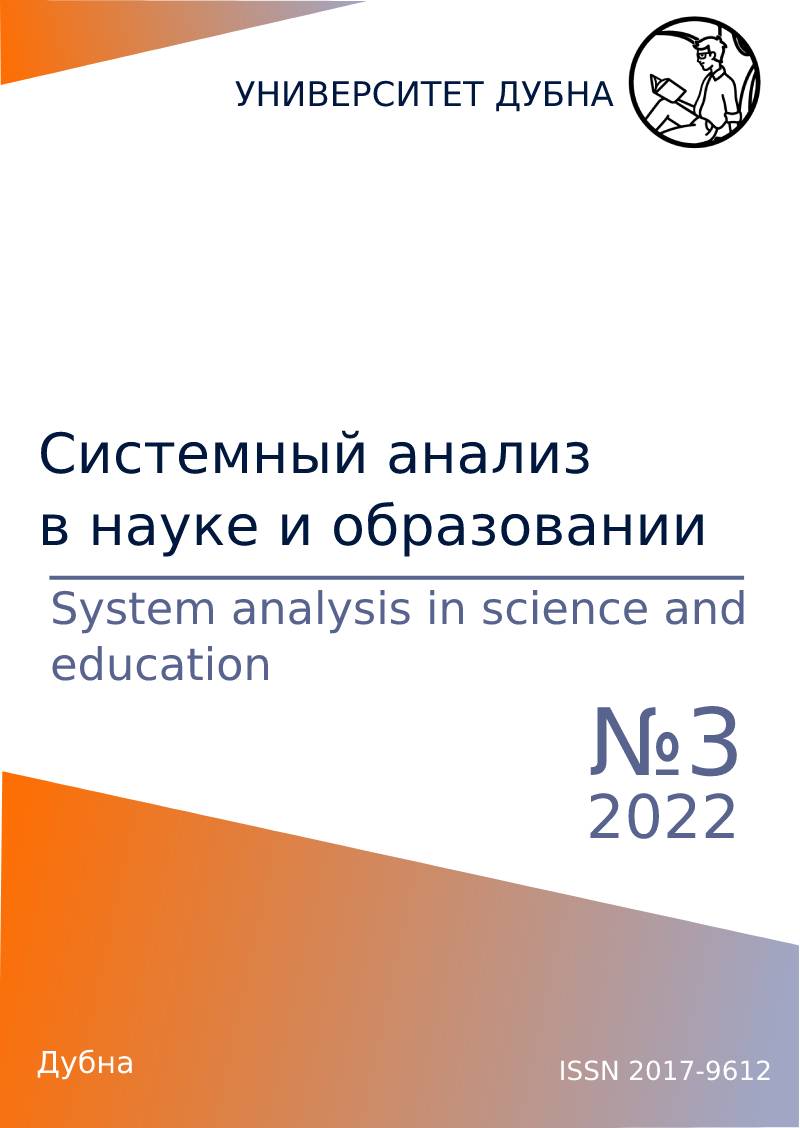Беспилотные летательные аппараты. Ч. 1: Биологический механизм движения в среде «воздух - вода»
Основное содержимое статьи
Аннотация
Возможности современных микро-летательных аппаратов (MAV) сильно ограничены тем, что могут работать только в воздухе. Разработка мультимодальных MAV, которые могут эффективно летать, погружаться в воду и возвращаться в полет, позволит применять распределенный мониторинг качества воды, поисково-спасательные операции и подводные исследования. В то время как некоторые из них могут приземляться на воду, нет доступных технологий, которые позволили бы им одновременно нырять и летать, из-за серьезных компромиссов в конструкции, которые необходимо решать для движения как в воздухе, так и в воде, а также из-за отсутствия мощных двигательных установок. что позволило бы перейти из-под воды в воздух. В природе несколько видов животных разработали конструктивные решения, которые позволяют им успешно переходить из воды в воздух и перемещаться в обеих средах. Примеры включают летающих рыб, летающих кальмаров, ныряющих птиц и ныряющих насекомых. В данной части 1 описывается биологический механизм движения этих мультимодальных животных и абстрагирует лежащие в их основе принципы проектирования с точки зрения создания роботизированного эквивалента водного микро-летательного аппарата (AquaMAV). Опираясь на парадигму вдохновленного биотехнологиями дизайна «вдохновляй-абстрагируй-внедряй», он определяет ключевые адаптации природы и конструкции робототехники. На основе этой оценки были предложены ключевые принципы проектирования успешных воздушно-водных роботов, т. е. использование стратегии погружения для входа в воду, складывания крыльев для повышения эффективности погружения, водометного движения для взлета воды и гидрофобных поверхностей для сброса воды и сухого полета. Этот двигательный механизм можно использовать для AquaMAV, а также для других роботизированных приложений, где используется высокая удельная мощность, например, для прыгающих и плавающих роботов.
Скачивания
Информация о статье

Это произведение доступно по лицензии Creative Commons «Attribution» («Атрибуция») 4.0 Всемирная.
Библиографические ссылки
Ducard G.J.J., Allenspach M. Review of designs and flight control techniques of hybrid and convertible VTOL UAVs. Aerospace Science and Technology. 2021. Vol. 118. Pp. 107035.
Tvaryanas A.P., Thompson W.T., Constable S.H. The U.S. Military Unmanned Aerial Vehicle (UAV) Experience: Evidence-Based Human Systems Integration Lessons Learned. In Strategies to Maintain Combat Readiness during Extended Deployments. A Human Systems Approach (pp. 5-1 5-24). 2005. Meeting Proceedings RTO-MP-HFM-124, Neuilly-sur-Seine, France: RTO. [Available from: http:.www.rto.nato.int/abstracts.asp.]
Siddall R, Ortega A.A, Kovac M. Wind and water tunnel testing of a morphing aquatic micro air vehicle. Interface Focus. 2017. Vol. 7. Pp. 20160085. http:.dx.doi.org/10.1098/rsfs.2016.0085. Launching the AquaMAV: bioinspired design for aerial–aquatic robotic platforms. Bioinspir. Biomim. 2014. Vol. 9. Pp. 031001 (15pp). DOI:10.1088/1748-3182/9/3/031001.
Moore J. Closed-Loop Control of a Delta-Wing Unmanned Aerial-Aquatic Vehicle. arXiv:1906.01532v1 [cs.RO] . 4 Jun 2019.
Aldhaheri S. et al. Underwater Robot Manipulation: Advances, Challenges and Prospective Ven-tures. arXiv:2201.02954v1 [cs.RO]. 9 Jan 2022.
Pinheiro P.M. et al. Trajectory Planning for Hybrid Unmanned Aerial Underwater Vehicles with Smooth Media Transition. arXiv:2112.13819v1 [cs.RO] 27 Dec 2021.
Suming Q., Weicheng C. An Overview on Aquatic Unmanned Aerial Vehicles. Ann Rev Resear. 2019. Vol. 5, No 3. Pp. 555663. DOI: 10.19080/ARR.2019.05.555663
Ma Z. et al. Configuration Design and Trans-Media Control Status of the Hybrid Aerial Underwa-ter Vehicles. Appl. Sci. 2022. Vol. 12. Pp. 765. https://doi.org/10.3390/app12020765.
Maia M.M. et al. Demonstration of an Aerial and Submersible Vehicle Capable of Flight and Underwater Navigation with Seamless Air Water Transition. arXiv:1507.01932 [cs.RO]. 2015.
Rockenbauer F.M. et al. Dipper: A Dynamically Transitioning Aerial-Aquatic Unmanned Vehicle. Robotics: Science and Systems 2021. Held Virtually, July 12-16, 2021.
Debruyn D. et al. MEDUSA: a Multi-Environment Dual-robot for Underwater Sample Acquisition. IEEE Robotics and Automation Letters (RAL) paper presented at the 2020 IEEE/RSJ International Conference on Intelligent Robots and Systems (IROS) October 25-29, 2020, Las Vegas, NV, USA (Virtual).
Staub N. et al. The Tele-MAGMaS: An Aerial-Ground Co-manipulator System. IEEE Robotics and Automation Magazine. 2018. Vol. 25, No 4. Pp.66-75. DOI: 10.1109/MRA.2018.2871344. hal-01935127
Daimetry A. AERIAL MANIPULATOR WITH DOOR OPENING FUNCTION. Proceedings of the 9th JFPS International Symposium on Fluid Power, Matsue, 2014 Oct. 28 - 31, 2014. Pp. 195-200.
Sivčev S. et al. Underwater manipulators: A review. Ocean Engineering. 2018. Vol. 163. Pp. 431–450.
Jing X., Xiao S. Configuration Design and Trans-Media Control Status of the Hybrid Aerial Un-derwater Vehicles. Appl. Sci. 2022. Vol. 12. Pp. 765. https://doi.org/10.3390/app12020765.
Ucgun H. et al. A review on applications of rotary-wing unmanned aerial vehicle charging sta-tions. Intern. J. of Advanced Robotic Systems. 2021. No 1. Pp. 20. DOI: 10.1177/17298814211015863.
Paul H. Development of a Versatile Three-arm Aerial Manipulator System. Doctoral Thesis. Doc-toral Program in Advanced Mechanical Engineering and Robotics Graduate School of Science and Engineering Ritsumeikan University. March 2021.
Ollero A. et. al. Past, Present and Future of Aerial Robotic Manipulators.IEEE TRANSACTIONS ON ROBOTICS. 2022. Vol. 38, No. 1. Pp. 626-645. Preprint version final version at http://ieeexplore.ieee.org/. 2021
Yılmaz E. Modeling and Nonlinear Adaptive Control of an Aerial Manipulation System. Submit-ted to the Graduate School of Engineering and Natural Sciences in partial fulfillment of the re-quirements for the degree of Master of Science Sabanci University, July, 2019.
Paul H. et al. TAMS: development of a multipurpose three-arm aerial manipulator system. Ad-vanced Robotics. 2021. Vol. 35. No 1. Pp. 31-47. DOI: 10.1080/01691864.2020.1845237.
Yang B. et al. Benchmarking Robot Manipulation with the Rubik’s Cube. arXiv:2202.07074v1 [cs.RO] 14 Feb 2022.
Zhou Y. et al. Kirin: A Quadruped Robot with High Payload Carrying Capability. arXiv:2202.08620v1 [cs.RO] 17 Feb 2022.
Tranzatto M. et al. CERBERUS: Autonomous Legged and Aerial Robotic Exploration in the Tun-nel and Urban Circuits of the DARPA Subterranean Challenge. arXiv:2201.07067v1 [cs.RO] 18 Jan 2022.
Tzoumanikas D, еt al. Aerial Manipulation Using Hybrid Force and Position NMPC Applied to Aerial Writing. Robotics: Science and Systems 2020 Corvalis, Oregon, USA, July12-16, 2020.
Brunner M. et al. Energy Tank-Based Policies for Robust Aerial Physical Interaction with Moving Objects. arXiv:2202.06755v1 [cs.RO] 14 Feb 2022.
Fishman J. et al. Dynamic Grasping with a “Soft” Drone: From Theory to Practice. arXiv:2103.06465v1 [cs.RO] 11 Mar 2021.
